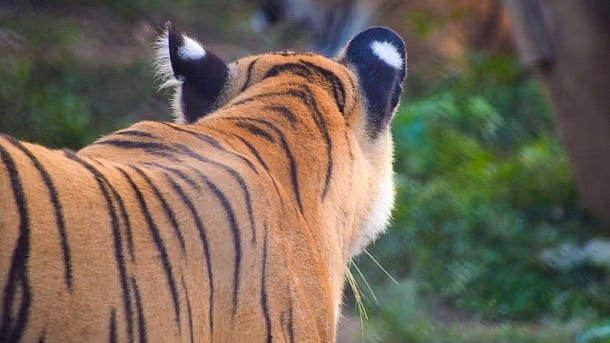
Representative image of a tiger
Credit: iStock Photo
Bengaluru: A male sub-adult tiger from Nagarahole tiger reserve has travelled more than 360 km (radial distance) to reach forest areas of Karwar division in Uttara Kannada district. The 20-month journey is said to be one of longest dispersal journeys of a sub-adult tiger to be recorded in Karnataka in recent times.
The tiger’s journey from the southernmost part of the state to the north-west tip of Karnataka also highlights the importance of conserving corridors for safe dispersal of tigers to ensure balancing of tiger population in protected areas and genetic diversification.
Despite the corridor being highly fragmented, the dispersal tiger, in search of territory, has ‘wandered’ through protected and human dominated areas without coming into conflict with humans. Forest officials believe that the tiger could further travel north towards either Kali Tiger Reserve or into Goa/Maharashtra via Bhimgad Wildlife Sanctuary.
The tiger was first photographed in Nagarahole tiger reserve in 2023 and recently it was photographed in Karwar division. Officials say the tiger may be four or five years old now. Karwar division officials confirmed the identity of the tiger through state’s tiger data base.
“We are not sure of the route the tiger might have taken to reach the Karwar division. However, this proves that there exists a safe corridor for tigers between Nagarahole and Uttara Kannada through which they can reach KTR or other protected areas without coming into contact with humans,” says Karwar Deputy Conservator of Forest C Ravishankar.
He says that the division has been accommodating spill-over tigers from KTR and is one of the vital tiger corridors.
This is not the first time that a tiger has travelled this far to establish a territory in KTR. In 2020, a male tiger from Maharashtra was photographed establishing its territory in KTR and before that, another male tiger from Bhadra Tiger Reserve travelled nearly 200 km to make KTR its new home.
Qamar Quereshi, former nodal officer with the Wildlife Institute of India-NTCA Tiger Cell, says dispersal of male tigers is a common phenomenon, where male sub-adult tigers after separating from the mother will randomly move to establish safe territory, where they can get food and mates.
“There have been records of tigers traveling nearly 600 km in search of food and mates. This journey is very important as it ensures continuation of the tiger corridor and diversification of genes that will help in preventing extinction of tigers in particular places due to diseases. The dispersal also ensures that the tiger population in densely populated protected areas is also maintained.”
